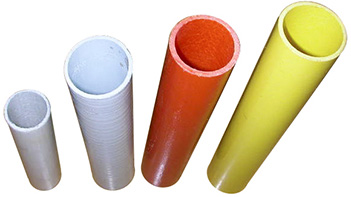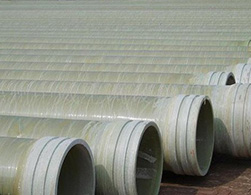The pullwinding technology is similar to pultrusion, but pullwinding profiles have much better strength and stiffness than pultruded profiles, especially in the transversal direction because there is roving at both longitudinal and transversal direction, so they are suitable to be used as loading structural profiles. The cost of pullwinding products is 20~30% more expensive than pultruded profiles because of more complicated process.
Pullwinding poles can be widely used in electrical poles, light poles and transportation high pressure pipes.

Filament winding is best suited for medium to large diameter parts of longer lengths, for example, 1″ through 24″ diameter structures with lengths from 10′ to 20′. It is also the most automated process for producing tubing and tanks and is therefore best suited for higher quantity production runs.
- Impregnated with epoxy resin (in situ)
- Wound onto a mandrel via precise CNC control at various angles
- Externally pressurized for compaction and then
- Heat cured to solidify

| Manufacturing Method | Pullwinding | Filament Winding |
| Fiber volume content | 58 v-% | 50 v-% |
| Fiber weight content | 75 w-% | 85 w-% |
| Water absorption | <2 w-% | <1 w-% |
| Fiber Type | Glass fiber | Glass fiber |
| Stiffness | 35 GPA | 50GPA |
| Bending strength | > 450 MPa | 276-552 Mpa |
| Tensile strength | > 500 MPa | 345-1035 Mpa |
| Density | 1.9g/cm³ | 1.89-2.27g/cm³ |
 info@unicomposite.com
info@unicomposite.com


























